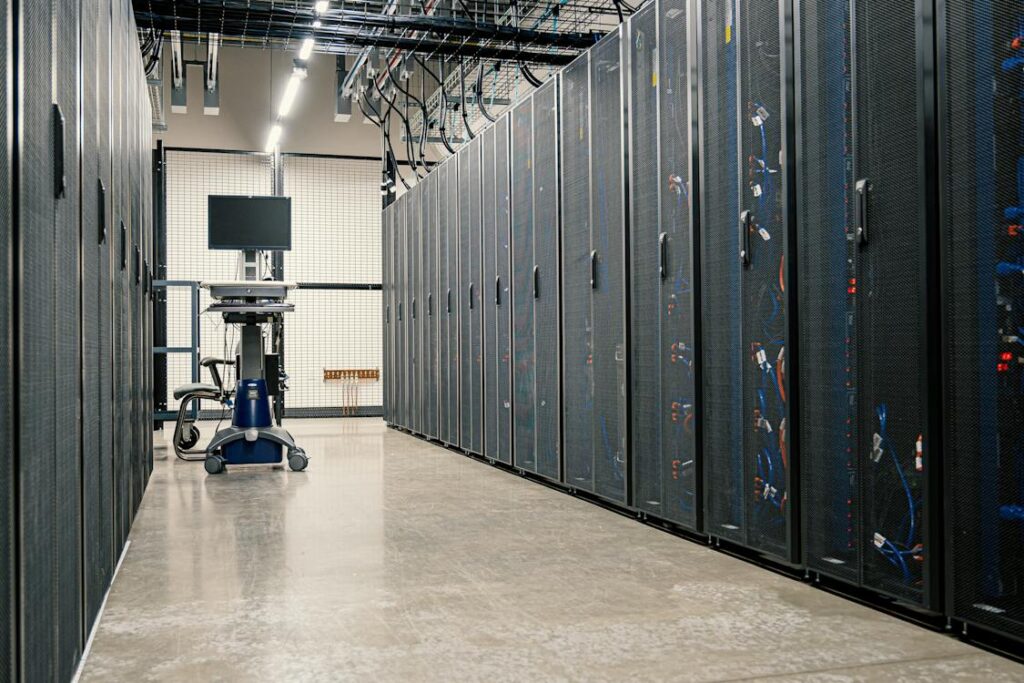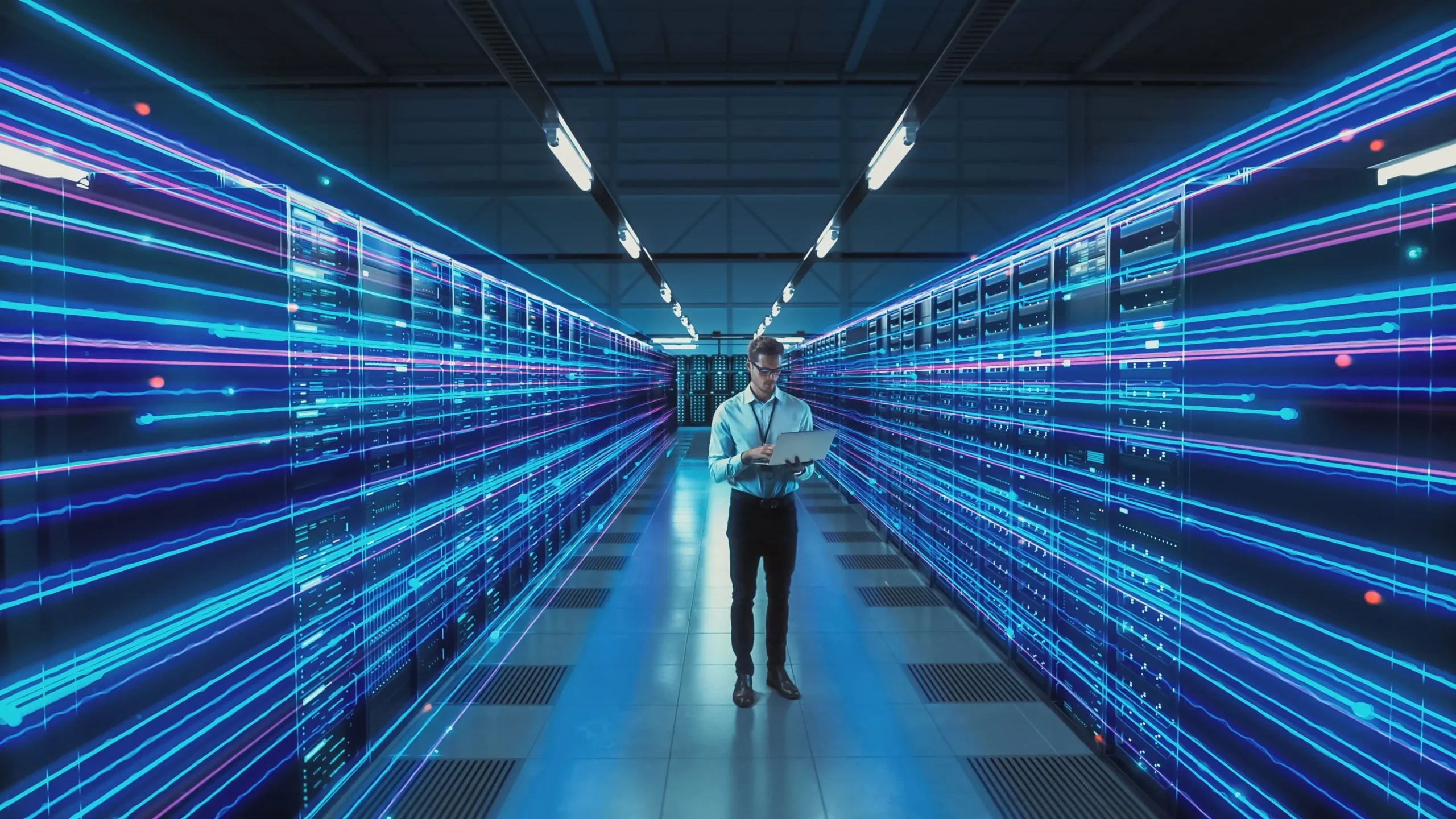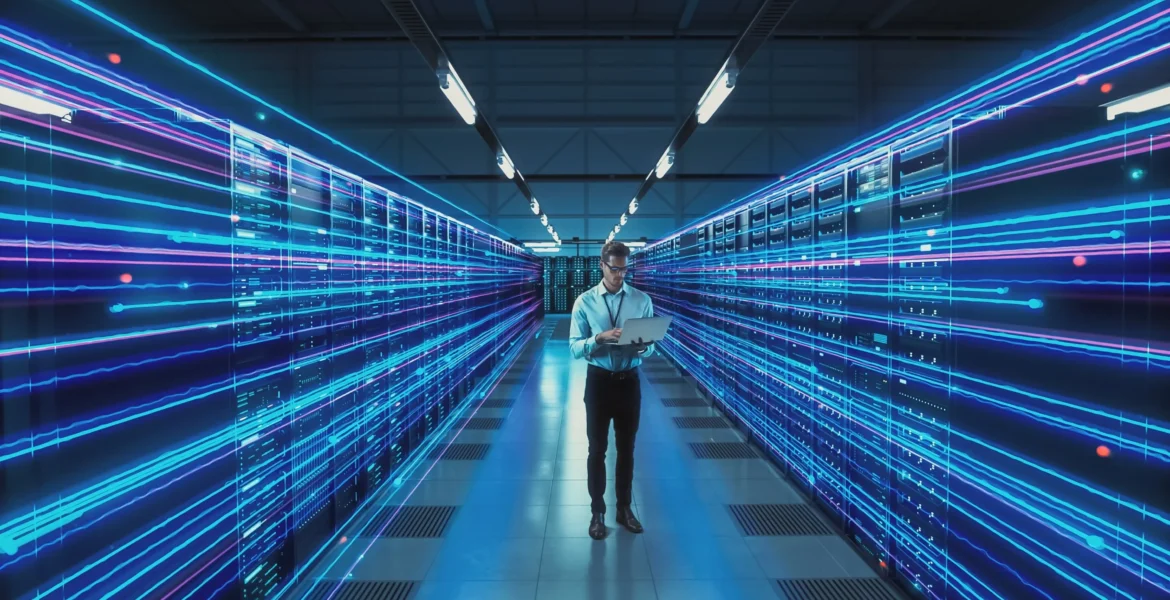
Over the years, data centers have evolved into powerful storage hubs, driven by advancements from industry leaders like EMC2 and NetApp. Innovations like RAID, clones, and snapshots have redefined data protection, while deduplication and compression have transformed primary and secondary storage. This article explores the journey of storage technologies and their peak in today’s technology-driven era.
Contents
- 1 Overview of Today’s Storage Technologies in Data Centers
- 2 Hard Disk Drives (HDDs)
- 3 Solid-State Drives (SSDs)
- 4 Tape Storage
- 5 Hybrid Storage Arrays
- 6 Storage Area Network (SAN) and Network-Attached Storage (NAS)
- 7 Storage Virtualization
- 8 Data Lake vs Data Warehouse
- 9 The Evolution of Storage Technologies
- 10 Conclusion
Overview of Today’s Storage Technologies in Data Centers
In this section, we’ll unravel the remarkable components that form the backbone of modern data centers. Prepare to be amazed as we delve into the transformative technologies that have propelled data centers to new heights of efficiency and performance.
Hard Disk Drives (HDDs)
Despite consuming less energy, HDDs remain the most practical choice for data centers due to their lower cost. SSDs are more expensive per gigabyte, with 1TB HDDs costing $40-$60 and the cheapest 1TB SSDs starting at around $80, translating to 4-6 cents per gigabyte for HDDs and 8 cents for SSDs. HDDs offer a better cost per bit of storage, but as SSD technology matures, they may eventually surpass HDDs in the future.
Solid-State Drives (SSDs)
The importance of SSDs in data centers is rapidly growing due to their superior performance. With significantly higher read and write speeds than HDDs, SSDs are ideal for applications requiring low latency and fast data access. As data centers increasingly prioritize speed, SSD adoption is projected to skyrocket.
Tape Storage
Although less prevalent than HDDs and SSDs, tape storage remains a reliable choice for long-term data archiving and backup. It offers exceptional data density and cost-effectiveness for cold data storage, making it a popular choice for organizations with massive data retention needs.
Hybrid Storage Arrays
Hybrid storage arrays are the ultimate blend of storage technologies, combining the speed of SSDs, the cost-effectiveness of HDDs, and the scalability of tape and cloud-based storage. This dynamic fusion empowers data centers to achieve peak performance while keeping costs in check. Embrace the power of hybrid storage arrays, where innovation meets efficiency!
Storage Area Network (SAN) and Network-Attached Storage (NAS)
Both SAN and NAS are network-based storage solutions, but they differ in their connectivity methods. A SAN uses Fibre Channel, while a NAS connects via Ethernet. SAN operates at the block level, while NAS accesses data as files. From the client OS perspective, SAN appears as a separate network of storage devices, resembling a disk, while NAS is perceived as a file server. SAN is commonly used for structured workloads like databases, while NAS is preferred for handling unstructured data, such as video and medical images.
Storage Virtualization
Through the abstraction of the physical storage resources from the operating systems and applications, storage virtualization streamlines storage management. Regardless of the underlying physical storage devices, it offers a single view of storage resources and enables administrators to manage storage centrally.
Data Lake vs Data Warehouse
Data centers often need to manage large volumes of raw data. Data lakes store data as files or objects in a flat architecture, while data warehouses organize data hierarchically in tiers. Both require significant storage capacity, and cloud providers also offer storage solutions to meet these requirements.
The Evolution of Storage Technologies
Even before the emergence of HDDs, the world witnessed the creation of the first data center in 1945. Situated at the University of Pennsylvania, this historic data center was designed to house the Electronic Numerical Integrator And Computer (ENIAC), the world’s first programmable, general-purpose, electronic digital computer. With a massive size of 150 feet and requiring a staggering 150 kW of power, ENIAC provided just 0.05 MIPS of computing power, marking the early stages of the data center’s evolution.
Now, let’s take a deeper look at the evolution of storage technologies.
- In the pre-1990s, large rooms of computers were used to create data centers, in which the presence of computer bugs indicated the presence of ‘live’ bugs inside.
- During the period of 1990-2000, the rise of the internet and client-server computing led to a significant increase in the prominence and importance of data centers for expanding businesses. The reliance on large datasets became commonplace, resulting in the rapid growth and establishment of data center companies to cater to the increasing demand.
- As the new millennium dawned, technology reached unprecedented levels of advancement. Remarkable progress in data center services, outsourcing demands, shared hosting, application hosting, and managed services became evident. The emergence of ISPs, ASPs, and MSPs further enriched the tech landscape. With these innovations, public awareness of data centers surged. Notably, in 2005, modular and portable data center designs made their grand entrance, revolutionizing the way data centers were envisioned and implemented.
- 2008–2011: During this time, data centers gained societal stability. From then on, the emphasis turned to data center administration facilities, cooling technology, and power efficiency. There were several options available to contemporary civilization when deciding how to build up the data storage system.
Conclusion
The evolution of storage technologies in data centers has been remarkable, from the first HDDs in the 1950s to the cutting-edge SSDs and hybrid arrays of today. As data centers continue to play a vital role in our digital age, businesses need reliable and efficient solutions to stay ahead. STL Global Services offers innovative data center solutions to meet the evolving needs of businesses in this digital age. Embrace the future of data storage with STL Global Services.
Answer: A typical platter-based hard drive reaches read and write speeds of up to 250MB per second, while a basic SATA-bus SSD can peak at twice that speed. Newer PCI Express-based SSDs can be significantly faster, up to four times or more than the fastest platter drives, with speeds reaching 3,500MB to 7,000MB per second. The comparison is not even close; SSDs are far superior in speed.
Answer: Virtualization plays a crucial role in modern data center storage by consolidating physical servers into virtual machines (VMs). VMs are connected to a virtual access layer, incorporating storage access for centralized storage area networks and network-attached storage, leading to more efficient and flexible data storage models.
Answer: Unified storage, also called multiprotocol storage, combines block and file storage in a single system, eliminating the need for separate SAN and NAS platforms. It supports Fibre Channel, iSCSI block storage, and file protocols like NFS and SMB. NetApp is a notable pioneer, but multiple vendors now offer multiprotocol options.
Answer: Data storage is evolving with the shift from HDDs to SSDs, catering to consumers’ increasing storage needs. Cloud storage demand will grow, necessitating vast data centers and extensive server memory. While HDDs may still be used for high-capacity data, SSD storage will rise, and eventually, AI could dominate the world with SSD-based systems.















